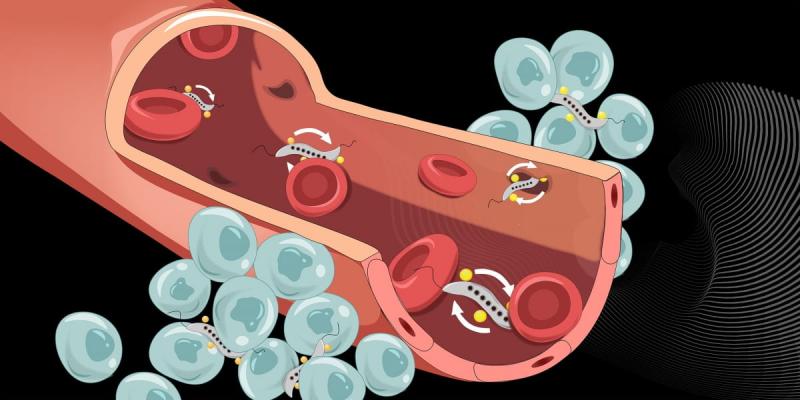Magnetic Driven Drug Delivery Technology: A Revolutionary Cancer Treatment Technology
Drug delivery is a process of delivering a pharmaceutical compound to its site of action. Over the past few decades, researchers have been working on developing innovative drug delivery methods to more effectively target cancer cells while minimizing potential side effects. One such promising technology is magnetic driven drug delivery which uses magnetic nanoparticles to guide drugs directly to tumor tissues under an external magnetic field.
Conventional chemotherapy often lacks specificity and ends up distributing the drugs throughout the body, including normal tissues. This nonspecific targeting exposes healthy cells and tissues to toxic effects of the drugs and leads to several adverse side effects. There has been a growing need to develop targeted drug delivery approaches that can home in on cancer cells with high precision.
Magnetic Driven Drug Delivery Technology utilizes a magnetic field to direct ferrofluids or magnetic nanoparticles coated with drugs specifically towards the tumor site. This site-specific approach allows therapeutic agents to accumulate preferentially in diseased tissues while minimizing systemic exposure. Magnetic drug targeting offers several advantages over conventional chemotherapy including reduced toxicity, increased drug concentration at the tumor site, and potential for improved therapeutic efficacy.
How Magnetic Drug Delivery Works
Magnetic drug delivery involves the use of biocompatible nanoparticles, usually made of iron oxide, which are coated with drugs, genes or other molecules. These magnetic nanoparticles, called nanocarriers, enter the blood circulation after intravenous injection into the body.
An external permanent magnet or an electromagnetic device is placed externally over the target tumor site to generate a localized magnetic field. This magnetic field guides the nanocarriers loaded with anticancer drugs or other biomolecules towards the tumors. As the nanocarriers accumulate in the tumor region under the magnetic force, the drugs are gradually released inside the cancer cells. This allows achieving much higher local drug concentrations at the tumor compared to nonlocal distributions obtained from systemic chemotherapy.
Key Components
The main components involved in a magnetic drug delivery system include:
- Magnetic Nanocarriers: These are nano-sized particles, typically made of iron oxide, that can be directed by an external magnetic field. They serve as drug carriers to target the tumor site.
- Drug/Biomolecule Coating: The magnetic nanoparticles are coated or encapsulated with anticancer drugs, gene therapies or other biomolecules for targeted delivery.
- External Magnetic Device: A permanent magnet or electromagnetic coil is used as an external source to generate a localized magnetic field over the tumor region and guide the nanocarriers.
- Targeted Site: The magnetic nanoparticles loaded with therapeutic agents are guided by the external magnetic field and accumulate preferentially at the targeted tumor tissue.
Applications in Cancer Treatment
Magnetic drug delivery holds promise across different cancer types and treatment modalities:
- Chemotherapy: Magnetic nanoparticles can be coated with chemotherapeutic drugs to accumulate them in higher concentrations specifically at the tumor. This improves drug efficacy and reduces side effects.
- Gene Therapy: Magnetic genes carriers loaded with therapeutic genes, silencing RNA or other genetic material can be guided to tumors for gene-based treatments.
- Theranostics: Therapeutic agents and diagnostic imaging probes can both be encapsulated for simultaneous diagnosis and treatment monitoring capabilities.
- Hyperthermia Therapy: Magnetic nanoparticles generate heat when exposed to an alternating magnetic field and can be used to induce localized hyperthermia or heat therapy for cancer treatment.
- Radiotherapy Enhancement: Magnetic nanoparticles loaded with radiation sensitizers or loaded with radioisotopes can focus radiation dose at tumor sites. This enhances tumor cell killing during radiotherapy.
Advantages over Conventional Therapy
Some key advantages of magnetic driven drug delivery over conventional chemotherapy include:
- Increased local drug concentrations at tumor sites resulting in better therapeutic outcomes.
- Prolonged retention of drugs at diseased sites due to magnetic accumulation.
- Reduced systemic side effects as normal tissues receive lower drug exposure.
- Potential for personalized dosage regimens guided by tumor response monitoring.
- Combination with other modalities like gene therapy, radiation therapy and hyperthermia opens new treatment avenues.
- Safer drug formulations are possible due to reduced drug doses required for therapeutic effects.
Challenges and Future Prospects
While magnetic drug targeting has proven successful in preclinical studies, some challenges remain in translating this method into widespread clinical use:
- Larger magnetic nanoparticles experience difficulties in widespread dissemination through tumor tissues beyond the periphery.
- Magnetic properties tend to degrade after repeated cell internalization cycles reducing targeting efficiency over time.
- Magnetic nanoparticle aggregation due to inter-particle magnetic attraction needs to be addressed.
- Harmonizing drug pharmacokinetics with magnetic accumulation properties is critical for optimized therapies.
- High precision external magnetic guidance systems are required for clinical translation.
Going forward, development of smaller but highly magnetic nanoparticles, biodegradable formulations, multi-functional nanoparticles and clinically compatible magnetic systems hold the potential to help realize the full promise of magnetic driven drug delivery for effective cancer management. With further advances, this technology may revolutionize cancer treatment approaches in the coming decade.
Get More Insights on Magnetic Driven Drug Delivery Technology
